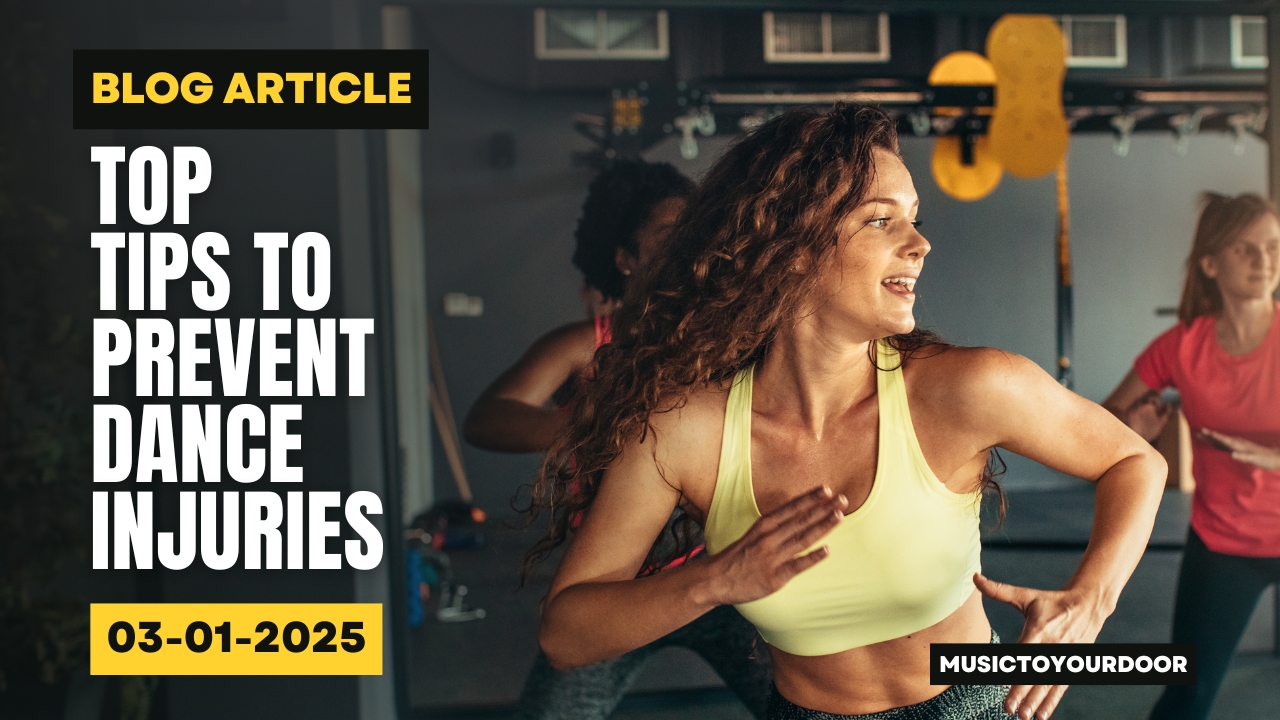Introduction
Have you ever felt a sharp pain mid-performance or struggled with soreness that lingers long after class? Dance is an incredible art form that demands strength, flexibility, and endurance. However, without proper precautions, injuries can quickly sideline even the most dedicated dancers.
Preventing dance injuries is essential for longevity in the art, whether you're a beginner or a seasoned professional. In Australia, thousands of dancers suffer from common dance injuries each year, ranging from minor strains to severe fractures. According to the Safe Dance IV Report, a significant percentage of injuries stem from overuse and improper technique.
By adopting safe dance practices and understanding how injuries occur, you can protect your body, enhance performance, and keep dancing for years to come. This guide will cover dance injury prevention strategies, from proper conditioning to recovery techniques, ensuring you stay strong and injury-free.
Understanding Common Dance Injuries
Overuse Injuries: The Silent Culprits
Overuse injuries develop gradually due to repetitive movements. Dancers often push their limits, unaware that microtrauma is accumulating in their muscles and joints.
Some of the most common overuse injuries include:
-
Tendinitis: Inflammation of tendons due to repetitive stress, commonly seen in the ankles and knees.
-
Stress Fractures: Tiny cracks in bones caused by repeated impact, often in the shins or feet.
-
Shin Splints: Pain along the shinbone due to excessive training on hard surfaces.
Traumatic Injuries: Instant and Unexpected
Traumatic injuries occur suddenly, often due to improper technique, inadequate warm-ups, or accidents. Examples include:
-
Sprains: Ligament injuries from awkward landings or sudden twists, especially in ankles.
-
Fractures: Bone breaks from high-impact movements or falls.
-
Dislocations: Joint injuries where bones are forced out of their normal position, requiring medical intervention.
Dance Injury Statistics in Australia
The Safe Dance IV report highlights that over 50% of Australian dancers experience an injury each year, with most cases resulting from overuse. Young dancers are particularly vulnerable due to growing bodies being subjected to intense training schedules.
Intrinsic Factors Contributing to Injuries
Physical Conditioning: Strength, Flexibility, and Endurance Matter
Dancers need balanced muscle strength, flexibility, and endurance to perform safely. Weak or tight muscles can lead to improper movement patterns, increasing injury risk.
-
Strength Training: Building core and lower-body strength stabilizes movements and prevents strain.
-
Flexibility Work: Regular stretching improves range of motion and reduces stiffness.
-
Endurance Training: Cardiovascular fitness helps maintain energy levels and prevents fatigue-related injuries.
Technique and Alignment: The Key to Injury Prevention
Poor technique is one of the leading causes of injuries. Misaligned posture and incorrect weight distribution place undue stress on joints and muscles.
-
Engage your core: Proper core activation supports the spine and maintains balance.
-
Land softly: Minimize impact by controlling jumps and avoiding hard landings.
-
Seek feedback: Regular corrections from instructors help fine-tune technique and avoid bad habits.
Previous Injury History: A Recurring Risk
Once injured, dancers are more susceptible to re-injury. Scar tissue, compensatory movements, and unresolved weaknesses can lead to chronic issues. Proper rehabilitation and gradual return to full activity are crucial in dance injury management.
Extrinsic Factors Contributing to Injuries
Training Environment: The Impact of Flooring and Studio Conditions
The right environment is essential for avoiding dance-related injuries. Factors to consider include:
-
Flooring: Sprung floors absorb shock and reduce impact on joints.
-
Temperature: Warm studios prevent muscle tightness and sudden strains.
-
Space: Crowded dance spaces increase collision risks.
Footwear and Equipment: The Right Gear Matters
-
Proper Dance Shoes: Shoes should provide adequate support and cushioning.
-
Protective Gear: Knee pads or ankle braces can prevent impact injuries.
-
Clothing: Avoid restrictive outfits that hinder movement.
Training Load and Scheduling: Balance is Key
Overtraining is a common cause of common dance injuries. Dancers should:
-
Alternate between intense and light training days.
-
Ensure adequate rest days to allow muscle recovery.
-
Listen to their bodies—pain should never be ignored.
Effective Strategies for Preventing Dance Injuries
Warm-Up and Cool-Down Routines: Essential for Every Dancer
A proper warm-up prepares the body for movement and reduces injury risks. It should include:
-
Dynamic stretches: Leg swings, arm circles, and lunges to increase mobility.
-
Cardio activation: Light jogging or skipping to raise heart rate.
-
Joint mobilization: Gentle rotations to improve flexibility.
Cooling down is equally important and should include static stretching and deep breathing to aid muscle recovery.
Strength and Conditioning Programs: Tailored Exercises for Dancers
-
Core Workouts: Planks and Pilates improve stability.
-
Resistance Training: Helps strengthen muscles prone to overuse injuries.
-
Balance Drills: Prevent falls and improve coordination.
Technique and Body Awareness: Continuous Learning Matters
Dancers should prioritize:
-
Regular coaching sessions to refine technique.
-
Video analysis to identify movement patterns.
-
Mindfulness practices to enhance body awareness.
Rest and Recovery: Knowing When to Stop
Rest is vital in dance injury management. Strategies include:
-
Adequate sleep: At least 7-9 hours per night.
-
Active recovery: Gentle yoga or swimming.
-
Massage therapy: Relieves muscle tension and prevents stiffness.
Nutrition and Hydration: Fueling the Body for Performance
-
Carbohydrates: Sustain energy levels.
-
Protein: Repairs muscle damage.
-
Hydration: Prevents cramps and fatigue.
Resources and Support in Australia
Professional Organizations and Initiatives
-
Ausdance Safe Dance® Program: Provides guidelines on safe dance practices.
-
Australian Physiotherapy Association: Offers dance-specific rehabilitation resources.
Accessing Healthcare Professionals
-
Dance-specialized physiotherapists: Help manage injuries effectively.
-
Sports psychologists: Support mental well-being.
Educational Workshops and Seminars
-
Ausdance workshops: Focus on technique and injury prevention.
-
Ballet and contemporary dance intensives: Provide expert coaching on injury-free performance.
Conclusion
Preventing dance injuries requires a proactive approach, combining strength training, proper technique, and recovery strategies. By understanding risk factors and implementing safe dance practices, Australian dancers can perform at their best while minimizing injury risks. Prioritizing health ensures a long and fulfilling dance career—because every dancer deserves to move freely, without pain.
